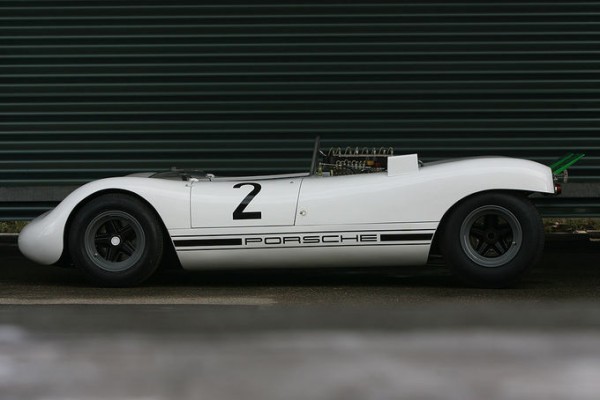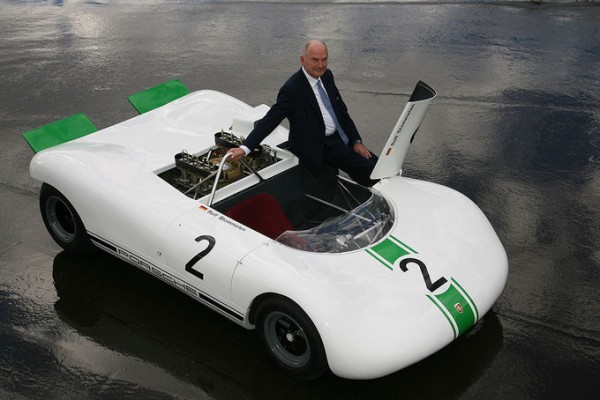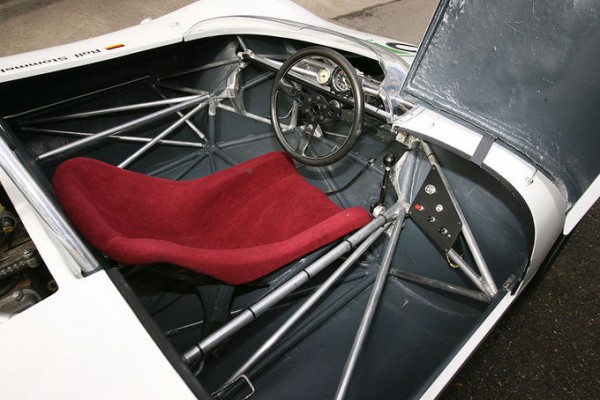This coming weekend, Porsche is bringing the 1968 909 Bergspyder to the Amelia Island Concurs d ‘Elegance (along with another incredibly rare Porsche). While the so called “Plastic Porsche,” was only in use for two races of the 1968 European Hillclimb Championship season, it would go on to have a much wider impact in Porsche’s racing and development history.

The Bergspyder, or Mountain Spyder, as the name translates to, was a powerful and lightweight machine. Weighing an incredible 375 kg, before fuel and oil weights, the steel free, purpose built Porsche could reach 100 km/hour in 2.4 seconds (stock 911s of that era reached the same speed in the 6 second range).
The on the track rivalry between Porsche and Ferrari, during the 1960s, is fairly well known. At the same time, a lesser known, but just as fierce competition, was taking place in hill climb racing. Hill climbing was enjoying enormous popularity in the 60’s with the participation of both F1 drivers and entries from OEM’s such as Ferrari, Porsche, BMW, Alfa Romeo, and Abarth in heavily attended events.

In 1967, Ferrari announced that they were building a hill climb racer to compete directly against Porsche who had won the prestigious European Hill Climb series for the past few years. That announcement set Porsche heir and engineer, Ferdinand Piech, and his company, into overdrive to build a fast, light weight, hill climbing beast. While Porsche racing has always meant excellence in engineering, they also stand for innovation, and the 909 Bergspyder is an outstanding example of that.
Porsche already had a lightweight hill climb car in the 910/8 racer, but Piech wanted to go even lighter.
His ambitions for a lightweight racer make Colin Chapman’s well-known design philosophy (“Adding power makes you faster on the straights. Subtracting weight makes you faster everywhere“) seem almost trivial in comparison. There isn’t a single piece of steel in the 909. So paranoid of the weight of the car, Piech went over the vehicle with a magnet upon completion. The chassis was aluminum. The four coil springs, titanium. Loom silver was used for wiring instead of copper, and balsa wood in the ignition system’s ballast resistors. All of these improvements resulted in an outstanding 45 kg drop in weight from the previous version. That’s almost 100 pounds.

The Porsche is not without its faults, however. The open wheel vehicle, combined with a chassis made of such lightweight and somewhat unsound composites, wasn’t entirely safe. This is well before monocoques and other safety design elements. Due to the short wheel base, the driver’s feet were precariously placed ahead of the front axle. Drivers still preferred the 910 car, and Porsche Works driver, Gerhard Mitter, continued to win in that vehicle.
With two rounds left in the 1968 Hill Climb season, the 909 Bergspyder made its debut. Rolf Stommelen drove the Porsche for both events, finishing in 3rd and 2nd place. The team of Mitter and Stommelen would secure a one, two overall for Porsche for the ‘68 season. With nothing left to prove, Porsche would end their official hill climb program. The 909 Bergspyder went off to retirement and lives in the company’s museum in Stuttgart.
What happened to the Ferrari that was said to inspire the 909?
The car that Ferrari had announced they would build in 1967, was not completed for the ‘68 season. They wouldn’t enter the new 212E Montagna until 1969 depriving us, and the annals of history, an undoubtedly epic battle of which we will never know the victor. Ferrari’s announcement did inspire a highly innovate time in Porsche’s racing history. The developments and innovations carried out in the 909 Bergspyder would go on to be used in Porsche’s later racing cars, particularly the 908/3.
About our newest contributor: Heather is a fan of cars, motor sports, and motorcycles. Her interests run the gamut from racing, to auctions, to auto history. You can find her on Twitter @McNewbie1, as a regular contributor to the motor sports blog, http://rennsport.kinja.com and on Kinja at http://mcnewbie1.kinja.com/.
Other Porsche Blog Posts You Will Enjoy
Porsche Is Bringing Two Insanely Rare Spyders To The Amelia Island Concours
Gooding and RM Preview An Excellent Array Of Porsches For Amelia Island Sale
Porsche 917, Possibly the Best Race Car of All Time
Porsche 917K Flat-12 Pure Engine Sound – In Action on Track